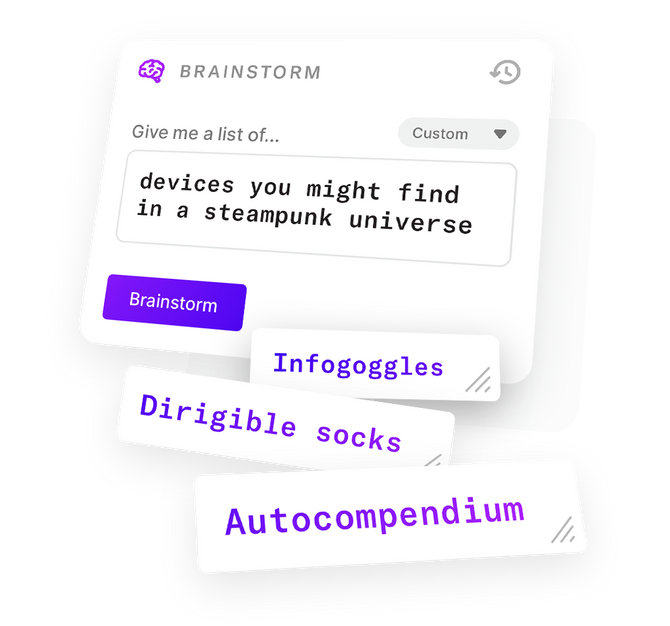Artificial intelligence (AI) chatbots have become increasingly popular in the past few years. These automated systems allow businesses to provide quick and efficient customer service, collect user data, and even make sales. There are a variety of AI chatbot platforms available on the market, each with their own unique features and limitations. In this blog post, we will explore different AI chatbot platforms, with a focus on their unique features, advantages, and limitations.
Dialogflow
Dialogflow is an AI platform that enables developers to design, build, and deploy chatbots for a variety of applications. It has a user-friendly interface and requires no coding knowledge. Dialogflow is owned by Google, which means that it integrates seamlessly with Google products such as Google Assistant, Google Home, and Google Cloud. In addition, Dialogflow provides analytics and insights into user interactions, allowing businesses to optimize their chatbots for better customer engagement.
One example of Dialogflow being used in a real-world scenario is H&M's Kik chatbot. The chatbot guides users through the shopping experience by suggesting outfits, providing product recommendations, and answering product questions.
IBM Watson
IBM Watson is an AI chatbot platform that can be used for a variety of use cases, including customer service, healthcare, and finance. Watson uses natural language processing and machine learning to simulate human interactions. In addition, Watson can analyze unstructured data, such as emails and documents, to provide personalized responses to users.
A real-world example of Watson in action is the chatbot created by the Royal Bank of Scotland. The chatbot helps customers with their banking needs, such as checking account balances and transferring funds.
Microsoft Bot Framework
Microsoft Bot Framework is a platform for building chatbots for a range of channels, including Facebook Messenger, Skype, Slack, and more. Bot Framework provides developers with tools and frameworks for building and connecting chatbots to different channels. In addition, Bot Framework provides natural language processing capabilities that enable bots to understand user intent and respond appropriately.
One of the most notable examples of Bot Framework in action is the chatbot created by Domino's Pizza. The chatbot allows customers to order pizza directly from the Facebook Messenger app.
Amazon Lex
Amazon Lex is a service for building chatbots that integrates with Amazon's Alexa voice assistant. Lex provides natural language processing capabilities and machine learning algorithms to create conversational interfaces that can be used for a variety of applications, including customer service, education, and entertainment.
One real-world example of Amazon Lex in action is the chatbot built by Capital One. The chatbot provides customers with account information, allows them to pay bills, and answers frequently asked questions.
ChatGPT-4
ChatGPT-4 is an AI chatbot platform developed by OpenAI, an artificial intelligence research organization. ChatGPT-4 utilizes a neural network to generate natural language responses to user input. The platform can be integrated with different applications, providing businesses with a flexible solution for creating chatbots.
One of the most notable features of ChatGPT-4 is its ability to provide context-aware responses. This means that the chatbot can remember user input and provide personalized responses.
In conclusion, there are a variety of AI chatbot platforms available on the market, each with their own unique features, advantages, and limitations. To choose the right chatbot platform for your business, it's important to consider your specific use case and user needs. By leveraging the latest trends and innovations in AI chat, businesses can create chatbots that deliver high-quality customer service and improve overall user engagement.
Compare Two Dialogflow and chatGPT4
Dialogflow and chatGPT4 are both popular and effective platforms for implementing chatbots and voice assistants in businesses. Each platform, however, has its own set of pros and cons that should be compared before making a decision on which one to use.
Dialogflow Overview:
Dialogflow is a Google-owned tool that helps developers design and integrate conversational interfaces into apps and devices. It allows businesses to create chatbots and voice assistants that can understand user queries and provide responses in a natural and engaging way.
Dialogflow's Features and Functionalities:
Natural Language Understanding: Dialogflow is equipped with advanced natural language processing (NLP) algorithms that understand complex user queries and provide accurate responses.
Multi-Platform Support: Dialogflow supports integration with popular platforms like Facebook Messenger, Slack, and Google Assistant.
Customization: Dialogflow provides developers with a range of customization options, including the ability to design custom chatbot workflows, create custom responses, and add image and video content.
Multi-Language Support: With Dialogflow, you can create chatbots in multiple languages, making it suitable for businesses that serve a global audience.
Pros of Dialogflow:
Easy to use and integrate: Whether you're a seasoned programmer or a novice, Dialogflow is simple to use and integrate.
Comprehensive documentation and support:Google provides comprehensive documentation and support for problems that may arise during use.
Multiple language options: Businesses that operate in a global market can easily satisfy customers in different regions of the world thanks to Dialogflow's multilingual support.
Wide range of integrations: Developers can also take advantage of Dialogflow's support for a variety of platforms to ensure the widest possible customer reach.
Cons of Dialogflow:
Limits in the free version: Dialogflow's free version can only handle a limited number of conversations per month, and upgrading to a paid version can be costly.
Limited customization options: While Dialogflow offers a range of customization options, it may not be suitable for developers who want complete control over their chatbot's design.
Limited control over the platform: Since it's a managed platform, developers have limited control over its operation.
ChatGPT4 Overview:
chatGPT4 is an AI-based chatbot tool that uses the advanced language model of the GPT-3 engine to produce text-based conversation flows. Unlike Dialogflow, chatGPT4 is designed to be used by non-technical users who want to create chatbots without any programming knowledge.
chatGPT4's Features and Functionalities:
Pre-Designed Conversation Flows: chatGPT4 provides a set of pre-designed conversation flows that make it easy for users to set up and customize their chatbots.
Multi-Platform Support: chatGPT4 can be integrated into almost any messaging platform or website, allowing it to reach a wide audience.
AI-Driven Responses: chatGPT4's AI engine uses the GPT-3 language model to provide natural and relevant responses to user queries.
Pros of chatGPT4:
Easy to use: chatGPT4's drag-and-drop interface means that anyone can create a chatbot without any programming experience.
Fast Setup: It's easy to set up chatGPT4 without any prior training. Users can start creating chatbots within a few minutes with basic instruction.
Powerful AI engine: chatGPT4's AI engine constantly learns from user interactions, improving its ability to answer user queries with accuracy.
Cons of chatGPT4:
Limited customization: Users may feel limited by the pre-designed conversation flows in chatGPT4, losing control of the chatbot interface design.
Dependence on GPT-3: chatGPT4's accuracy depends on the performance of the GPT-3 language model, which may not be infallible.
Lack of advanced analytics: Businesses may find it challenging to obtain in-depth analytics to analyze user behavior when using chatGPT4.
Real-life examples of businesses using Dialogflow and chatGPT4:
Dialogflow Example: Domino's Pizza - Domino's Pizza integrated their Dominos chatbot with Dialogflow, allowing customers to place their orders through a conversational interface using voice or text. The chatbot was also used for tracking orders and providing status updates, resulting in improved customer satisfaction and a reduction in call volumes.
chatGPT4 Example: DIYThemes - DIYThemes, a WordPress theme provider, used chatGPT4 to improve customer interactions with their chatbot, particularly for addressing common customer queries. Since implementing chatGPT4, DIYThemes has seen a significant reduction in customer support requests, reducing response times and improving customer satisfaction.
Performance, Accuracy, and Scalability:
When it comes to performance, Dialogflow has been shown to be very powerful, particularly in terms of NLP and customization options. Dialogflow is also scalable and is well-suited for businesses that expect high volumes of conversations. Comparatively, chatGPT4 is also quite powerful, particularly with its integration with the GPT-3 language model. Its simplicity makes it suitable for small and medium-sized businesses that want to provide basic customer service through chatbots.
Expert Opinion:
In conclusion, both platforms have their strengths and weaknesses. Dialogflow is best for businesses that want a customized and feature-rich chatbot platform with user engagement in mind. chatGPT4, on the other hand, is more appropriate for businesses that want a no-code solution that can be quickly implemented, without having to edit codes.
Overall, choosing between Dialogflow and chatGPT4 depends on the specific business's requirements. It would be best first to evaluate your needs before deciding which platform to use.
Compare Two Dialogflow and IBM Watson
Artificial intelligence-powered chatbots have become an indispensable tool for businesses, enabling them to provide quick, personalized, and efficient customer service while cutting costs. Two of the most popular chatbot development platforms in the market today are Dialogflow and IBM Watson. However, while both platforms share some features, there are significant differences between them that make them suitable for specific use cases.
Features and Capabilities
Dialogflow, formerly known as API.AI, is a Natural Language Processing (NLP) platform developed by Google. It allows developers to build conversational interfaces, chatbots, and voice assistants that can engage users in natural language conversations. Dialogflow has a simple and user-friendly interface, making it easy to design and integrate chatbots into websites, mobile apps, and messaging platforms.
IBM Watson, on the other hand, is a cognitive computing platform developed by IBM. Watson offers a wide range of AI-powered services, including NLP, machine learning, and data analysis. IBM Watson's capabilities go beyond chatbots; it can also be used to develop predictive models, analyze data, and automate complex tasks using advanced AI algorithms.
Benefits and Shortcomings
Dialogflow's strength lies in its ease of use and integration with Google's services such as Action on Google, a voice-activated speaker platform known as Google Home. With Dialogflow, developers can easily create chatbots and deploy them to various platforms such as Facebook Messenger, Telegram, and WhatsApp. Dialogflow also offers advanced NLP features such as intent recognition and entity extraction, making it easy to develop chatbots that can understand complex queries.
One of IBM Watson's significant advantages is its ability to process and analyze vast amounts of data, making it ideal for businesses dealing with complex information such as healthcare and finance. Watson is also more customizable than Dialogflow, allowing developers to create chatbots with unique personalities and capabilities. Moreover, Watson offers AI-powered analytics that can help improve performance and make data-driven decisions.
However, IBM Watson's complexity can also be considered a downside. Its complexity and steep learning curve can be daunting for developers who are new to AI development. Additionally, Watson's pricing is generally higher compared to Dialogflow.
Real-world Examples and Case Studies
Dialogflow's ease of use and flexibility make it a popular choice among businesses. For instance, Domino's Pizza uses it for its chatbot, named Dom, which allows customers to order pizzas in natural language. Dominos also uses Dialogflow to answer customer queries on its website and mobile app.
IBM Watson's power and versatility make it an excellent choice for businesses dealing with complex data. For example, Memorial Sloan Kettering Cancer Center uses Watson to analyze medical records and help physicians make informed decisions. Also, DBS Bank, a Singaporean bank, uses Watson to provide personalized banking services to its customers.
Which Platform to Choose?
Deciding between Dialogflow and IBM Watson comes down to the specific needs of a business or organization. If you require a chatbot for simple, natural language communication and quick deployment, Dialogflow is an excellent choice. For businesses dealing with large amounts of data that require predictive analytics, Watson may be more suitable.
In conclusion, both Dialogflow and IBM Watson have their unique strengths and limitations. Understanding their features, capabilities, and shortcomings is crucial in choosing the right AI chatbot platform that will best serve specific requirements. As the market for chatbots continues to grow, businesses and organizations should keep up with the trends and developments to select the most suitable AI-powered solutions.
Compare Three Chatbots
Introduction:
Chatbots have become essential in business operations, especially during the pandemic. Chatbots are software applications designed to interact with human beings via messaging platforms. The three most prominent chatbot platforms in the market today are Amazon Lex, Microsoft Bot Framework and IBM Watson. This piece compares and contrasts the features and capabilities of these products, shows examples of their applications in various industries, and showcases the strengths and weaknesses of each platform when dealing with complex scenarios and large volumes of data.
Amazon Lex:
Amazon Lex is a machine learning service for building conversational interfaces using voice and text. Amazon Lex is built on advanced deep learning technologies that enable it to identify user intents accurately. Lex offers powerful tools for designing, building, and testing chatbots. Its unique features include:
Enhance Customer Interactions – Amazon Lex enables businesses to improve customer engagement by offering personalized and automated customer support. For example, Pharmaceutical companies can use Amazon Lex to create chatbots that can help patients understand their medication instructions by asking questions, providing guidelines and side-effects.
Built-In Integrations – Amazon Lex integrates seamlessly with other Amazon services like AWS Lambda and AWS DynamoDB. These integrations enable developers to build sophisticated chatbots that can perform complex tasks like adding events to a calendar, updating customer orders.
Multilingual Support – Amazon Lex supports multiple languages, enabling businesses to create chatbots that can communicate effectively in any language. This feature is helpful in the hospitality industry, where customers speaking different languages need to make reservations or order food.
Scalability – Amazon Lex enables businesses to deploy chatbots in multiple regions, enabling improved response times, and flexibility. This feature is beneficial for large enterprises that need to handle chatbots in several languages to cater to different markets.
Text to Speech – Amazon Lex provides a feature that converts text to speech. This feature enables chatbots to respond verbally, improving interaction quality between the user and the chatbot.AI-powered responses can improve the quality of interaction.
Microsoft Bot Framework:
Microsoft Bot Framework is a tool for building bots that can be used with different channels like Facebook, Slack, and Skype. The platform is built on a modular architecture, making it more comfortable for developers to build sophisticated chatbots. Its unique features include:
Unified Development Experience – Microsoft Bot Framework provides unified development experience for developers where they can build, connect, and publish their chatbots across multiple channels.
Large Developer Community – Microsoft Bot Framework has a vast developer community that allows for open-source development of chatbots. It provides resources such as templates, code, and plugins to aid developers.
Excellent Language Support – Microsoft Bot Framework provides support for various programming languages like C#, Java, and Node.js. This makes it easier for developers to switch from one language to another.
Cross-Platform Integration – Microsoft Bot Framework provides cross-platform integration with Azure Bot Service and provides enterprise-grade security.
Pre-built Chatbot Templates – Microsoft Bot Framework provides pre-built chatbot templates for several industries like real estate, hospitality, education, and healthcare. These templates can be customized to suit specific business needs.
IBM Watson:
IBM Watson is an AI-powered chatbot platform that uses natural language processing and machine learning to generate responses. It is a powerful tool for building conversational interfaces for different industries. IBM Watson’s unique features include:
Insights – IBM Watson provides AI-powered insights that can help businesses understand customer needs and preferences. This feature is helpful in industries like banking, where businesses can analyze customer data to provide personalized services.
Advanced Analytics – IBM Watson provides advanced analytics that can generate insights from large sets of data. This feature is useful in industries like logistics, where chatbots can analyze data to optimize supply chain management.
Language Support – IBM Watson supports multiple languages that enable businesses to create chatbots that can interact with users in their native languages. This feature is beneficial in the tourism industry, where chatbots can provide information about tourist sites in different languages.
Pre-built Templates – IBM Watson provides several pre-built templates for different industries like healthcare, retail, and finance. These templates can be customized to suit specific business needs.
Security and Compliance – IBM Watson provides enterprise-grade security and compliance by enabling data encryption, access control, and auditing. This feature is crucial in industries like finance, where businesses need to comply with strict data security regulations.
Advantages and Disadvantages:
Amazon Lex provides strong natural language processing capabilities, seamless deployment, scalability, and multiple language support. However, Amazon Lex lacks extensive pre-built templates and chatbot development tools. Microsoft Bot Framework provides a unified development experience, large developer community, and excellent language support. However, Microsoft Bot Framework is limited in terms of natural language processing capabilities and insights generation. IBM Watson provides powerful analytics, advanced language support, and enterprise-grade security and compliance. However, it requires extensive training, which can be time-consuming and expensive.
Conclusion:
Selecting a chatbot platform depends on business needs, scalability, natural language processing capabilities, analytics, and security. Amazon Lex is best suited for businesses that require excellent natural language processing, multilingual support, and scalability. Microsoft Bot Framework is ideal for businesses that require a unified development experience, a large developer community and cross-platform integration. IBM Watson is best suited for businesses that require advanced analytics, enterprise-grade security and compliance, and insights generation. Understanding each platform’s strengths and weaknesses can help businesses select the chatbot platform that aligns with their requirements.
Related Articles:












